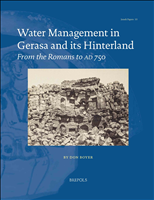2022 - Brepols
E-book
Digital Version
Download | Copy/paste | Printing
Water Management in Gerasa and its Hinterland : From the Romans to ad 750
560 p.
- The Decapolis city of Gerasa has seen occupation since the Bronze Age but reached its zenith in the Roman to early Islamic period as a population centre and trading hub. Located in a fertile valley in the limestone foothills of the Ajlun mountains, the city beneï¬Âtted from a benign climate and an excellent local water supply from karstic springs and perennial streams. By the Roman-Early Byzantine period, these water sources were harnessed and managed by extensive aqueduct and distribution networks that satisï¬Âed the broad range of water needs of both urban and rural dwellers. This volume offers an up-to-date, comprehensive, and multidisciplinary analysis of the water management system employed in both Gerasa and its hinterland from the time of Roman occupation to the devastating earthquakes that struck the city at the end of the Umayyad period. Drawing on archaeological evidence from the author's ï¬Âeld research, together with a critical and detailed analysis of the evidence of water installations and
- the r.
- esults of a radiocarbon dating study, this insightful book offers the ï¬Ârst diachronic interpretation of Gerasa's water distribution, setting the city in its geoarchaeological, historical, and landscape contexts, and contributing to the broader understanding of its archaeological history. [Publisher's text].
- Special access authorizations may apply; please contact us for further information.


